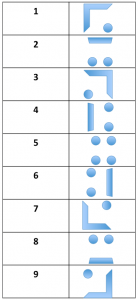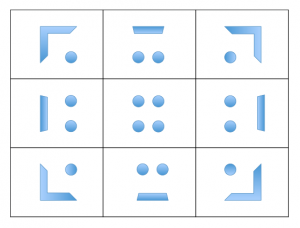For a recent workshop on “active learning”, my colleague Timo and I were looking for ways to have participants “experience constructivism”, i.e. show examples of instances that might make conversations about constructivism more applied to their realities.
First, we did a little exercise on blind spots. Which we all know we have, yet it is always surprising to experience them. So here is what you do: Close your left eye. Focus your right eye on the circle in the figure below. Move your head towards the screen, and maybe away again, always focussing on the circle, until the star disappears.

Find your blind spot: Close your left eye. Focus your right eye on the circle in the figure below. Move your head towards the screen, and maybe away again, always focussing on the circle, until the star disappears.
Got it? It’s weird, isn’t it? And what do you make of the fact that you obviously have a blind spot, yet even when you close one eye you cannot see it unless you specifically trick your eye into seeing it like we did above?
So next we had participants look at the alphabet below for 15 seconds, asking them to memorize it.
After 10 seconds, we hid the alphabet and asked participants to code my colleague’s 9-digit office number, using what they remember of the alphabet.
Very difficult!
We then went back to the table above and asked them to find an easy way to remember the alphabet. Still very difficult!
Finally we showed them a way to easily remember:
Not likely to forget this ever again, are you? ;-)
Next time – provided my workshop was long enough – I might actually show the telephone number in “code” before revealing the alphabet, giving participants a chance to compare their solutions and maybe figuring out the system themselves. Here is my own phone number:
Participants’ feedback was that they really enjoyed those two examples. We had a third one: The image of black spots all over a white background where you can see a dalmatian. Or can’t you? One of our participants could not, which was another great way to talk about how we construct reality around us, and how we each individually construct it differently.
It was a fun workshop, working with one of my all-time favorite colleagues. Hope we’ll get to lead another workshop together soon!


